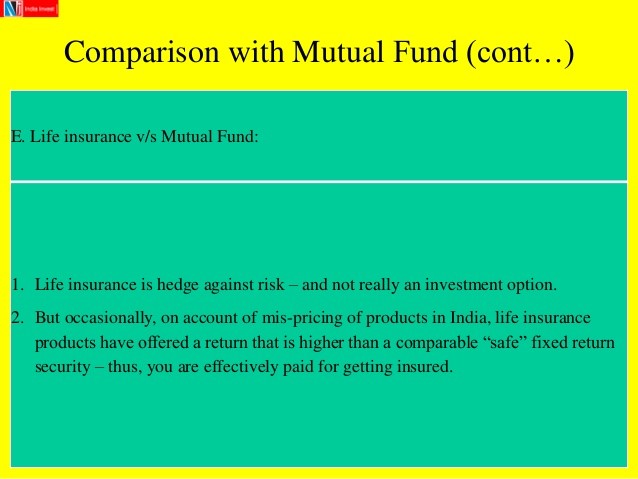Mutual Fund Investing Risk v v
Post on: 9 Май, 2015 No Comment

Nearly two years ago, one of my personal finance influencers . Ramesh Mangal, cautioned me that there is no clear-cut relationship between risk and reward. Although he had pointed me towards proof of the same, I did not pay much heed to it at that time.
Now after being reasonably comfortable with commonly used risk-return metrics like alpha, beta, Sharpe ratio, Sortino ratio etc. I am beginning to understand what he meant.
In a previous post . I had compiled risk and returns data from Value Research Online and presented the standard deviation and 3-year returns.
In this post, I will present other risk and return metrics for equity mutual funds from the same data set. Hopefully, it will help us understand the interrelationships among risk, return and volatility.
Note: If you would like to understand more about risk and return metrics, here is a non-technical writeup .
If you want to evaluate mutual funds with different risk/return metrics, use the Mutual Fund Risk and Return Analyzer
Reward vs. Risk
Let us assign the standard deviation (measure of deviation from the average return) as risk and alpha – the risk-adjusted measure of excess returns above the benchmark as reward .
We will assume alpha is calculated over a 3 year period. Value Research online does not specify the time period. For equity mutual funds it could be anywhere between 3-5 years.
Here is how alpha vs. standard deviation for all equity mutual funds (balanced, diversified, sector) looks.
- Most funds (84%) have an alpha above zero. That is, they have beat the benchmark over a 3 year period. Not music to the ears of those who believe in index investing.
- The average alpha is about 3%. There are many (46%) ‘above-average’ funds!
- There is a bunching of funds around a standard deviation of 18 (corresponding to most diversified equity funds) but there are a good number of points on either side of this bunch.
- If we choose a diversified equity fund and hold on it for 3Y, there is a good chance of beating the market (so stay calm!).
- A ‘good’ diversified mutual fund is just about any fund within the blue rectangle. That is within one standard deviation from the average standard deviation of all equity funds (sorry that sounds weird!)
- Having lone sector funds in the folio is not a smart idea because not only are they risky (high standard deviation > 25) but also come with high uncertainty wrt beating the index.
- Many funds manage to beat the market, on either side of the boxed region.
- Within the box, there is a high probability of getting a positive alpha. For lower or higher standard deviations, alpha could be positive or negative!
- Overall there is poor correlation between reward and risk. Higher risk does not imply higher reward .
- A typical diversified mutual fund has a decent change of beating the market, provided we let it, by staying invested!
Reward vs. Volatility
Beta is a measure of fund volatility relative to its benchmark. A fund with beta less than 1, is less volatile than its benchmark. A fund with beta equal to 1 is as volatile and as its benchmark.
Here is a plot of alpha versus beta. That is reward versus volatility.
- The points are heaped around beta =1 with many funds between beta = 0.8 to 1.
- So most of the funds that have beat the benchmark are either as volatile as the benchmark (over a 3y period) or just a little less volatile.
- Only 28% of funds with beta greater than or equal to 1 have beat the benchmark.
- Therefore, downside protection (Beta <1) is important but is not a guarantee of positive alpha. Only 57% of funds with beta < 1 have generated a positive alpha (beat the benchmark)
Reward vs. Correlation
R-squared is the percentage of funds movement linked to the benchmarks movement. An index fund will have an R-squared =1 (100%, the max. value).
Here is a plot of alpha vs. R-squared
- Notice the bunching about R-squared = 0.9.
- Funds with highest (or lowest) alpha are not well correlated with the benchmark!
- Most funds are well correlated with their benchmarks and yet manage to produce a small alpha.
- A good 65% of funds with R-squared greater than 0.8 have beaten the benchmark. Thus having funds with a strong overlap with the benchmark is not a bad thing at all!
- I would like to think that this implies that their portfolio have the same stocks as the benchmark but in different proportions.
- This also supports the inference made in an earlier post that fund selection is not as not important as it is made out to be. What matters is investor-persistence. Any old diversified fund with reasonably strong correlation with the benchmark is likely to do the job.
- Choosing a fund with low R-squared is a risk as the alpha could be negative.
Conclusions
- There is no relationship between risk and reward. Higher risk does not imply higher reward.
- Funds more volatile than their benchmarks have trouble beating their benchmarks
- There is a decent chance of a fund beating its benchmark, if it is less volatile or even as volatile as the benchmark.
- Nav movement of most funds that have beaten their benchmark are typically more than 80% correlated with their benchmark. Thus, even if over short periods of time, the fund does not beat the benchmark, if you stick with it, you are likely to reap rewards.














